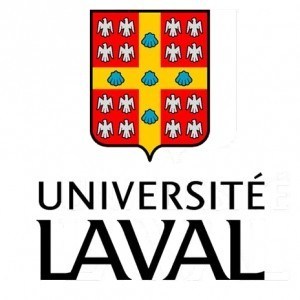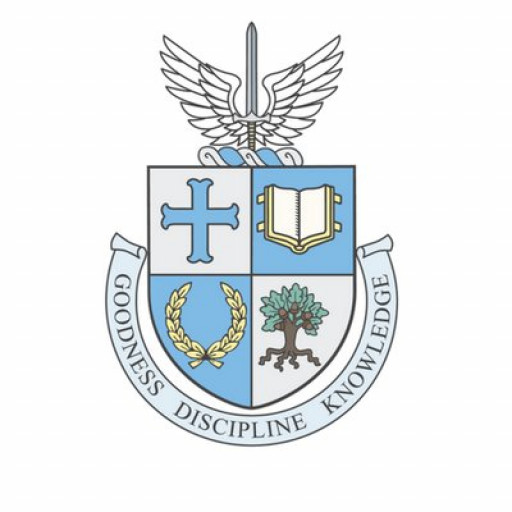Photos of university / #ulaval
The History of Art program at Laval University offers a comprehensive exploration of the development, context, and significance of visual arts throughout history. Designed for students passionate about understanding art beyond its aesthetic and stylistic aspects, this program emphasizes a multidisciplinary approach that combines cultural, social, and historical perspectives to provide a deep and nuanced comprehension of artistic movements, masterpieces, and artists from various periods and regions. Students will examine the evolution of art from antiquity through the modern era, engaging with diverse art forms including painting, sculpture, architecture, and decorative arts. The curriculum integrates theoretical studies with critical analysis, encouraging students to develop their interpretive skills and contribute original perspectives to art history discourse.
Throughout the program, learners will have opportunities to study important art historical theories, investigate the influence of socio-political contexts on artistic production, and explore the relationships between art, power, identity, and society. The program also offers courses in museum studies, conservation, and the digital humanities, preparing students for a variety of professional paths in museums, galleries, research institutions, and cultural organizations. Faculty members bring a wealth of expertise in different eras and regions, fostering an environment of scholarly inquiry and vibrant intellectual exchange.
Additionally, students can participate in internships and research projects that enhance practical skills and professional readiness. With a strong emphasis on critical thinking, analytical skills, and effective communication, the program equips graduates to pursue careers in academia, curation, restoration, cultural policy, and education. The History of Art program at Laval University is dedicated to fostering a deep appreciation of visual culture and empowering students to become knowledgeable and engaged contributors to the cultural sector.
The History of Art program at Laval University offers a comprehensive exploration of the development and evolution of visual arts across different periods, cultures, and regions. This program is designed to provide students with in-depth knowledge and critical understanding of art history, covering major artistic movements, influential artists, and significant cultural contexts. Throughout the curriculum, students will examine ancient, medieval, Renaissance, modern, and contemporary art, gaining insights into the social, political, and technological factors that have shaped artistic expression over the centuries.
The program emphasizes analytical skills, encouraging students to interpret and critique artworks through various theoretical perspectives and methodological approaches. Courses include detailed studies of art from different geographic areas, such as European, North American, Asian, and Indigenous art forms, fostering a global perspective. Students will learn about the development of artistic techniques and styles, the role of patronage and institutions, and the impact of historical events on art production.
In addition to classroom instruction, students are encouraged to participate in museum visits, exhibitions, and research projects to enhance their practical understanding of artifacts and artworks. The program also offers opportunities for specialization in specific fields such as medieval art, Renaissance art, contemporary art, or visual culture, allowing students to tailor their academic journey according to their interests and career goals.
Graduates of the History of Art program at Laval University are prepared for careers in museums, galleries, cultural institutions, education, research, and cultural management. They develop critical thinking, research, and communication skills that are highly valued in various professional contexts. The program aims to foster a deep appreciation of artistic heritage and to cultivate an informed perspective on the significance of art in human history.
The Bachelor of Arts in the History of Art at Laval University requires students to complete a comprehensive curriculum designed to provide a solid foundation in the history and appreciation of visual arts. Students must undertake a set of core courses that cover the fundamental periods and styles of art history, including ancient, medieval, Renaissance, modern, and contemporary periods. These courses aim to develop critical thinking, visual analysis skills, and an understanding of the social, political, and cultural contexts of artworks. In addition to the core courses, students are encouraged to participate in specialized electives that allow exploration of particular themes or regions, such as Asian art, African art, or Latin American art. Language requirements may include proficiency in French and English, facilitating access to a broad range of scholarly resources and enhancing interpretative skills. As part of their training, students are expected to engage in research projects, which foster independent investigation and academic writing skills. The program may include practical components such as museum visits, exhibitions, and possible internships, providing real-world experience in art conservation, curation, or education. To complete the degree, students must accumulate a specified number of credits, which typically include general education courses, major-specific courses, and a final thesis or comprehensive exam. The program aims to prepare graduates for careers in museums, galleries, cultural institutions, education, or further academic study. Throughout the programme, students will also develop tools for visual literacy, archival research, and interpretation of artworks within diverse cultural frameworks.
The financing of the Art History program at Laval University is primarily supported through a combination of university funding, government grants, and student contributions. Laval University, being a prominent institution in Quebec, benefits from provincial funding allocated to higher education, which helps subsidize the costs associated with the program, including faculty salaries, research opportunities, and academic resources. Additionally, the university actively promotes scholarships and financial aid options for students enrolled in the Art History program. These scholarships are often awarded based on academic merit, financial need, or specific criteria such as research interests or extracurricular involvement related to art history. Students are encouraged to apply for government-sponsored financial aid programs, including Quebec’s financial assistance schemes, which provide grants and loans to eligible students to help offset tuition fees and living expenses.
The university also offers work-study opportunities, allowing students to engage in part-time employment within university facilities or partnered organizations, thereby gaining work experience while supporting their studies financially. International students pursuing the Art History program can access specific scholarships for overseas students, as well as international student support funds that Laval University provides. Private sources, such as donations from alumni and art foundations, also contribute to the funding network, enabling the university to maintain high standards of instruction and research activities.
Furthermore, Laval University has established partnerships with museums, cultural institutions, and art organizations, which sometimes provide additional funding, internships, or bursaries to students participating in related projects. Many students also seek external funding through research grants for their thesis or specific projects in art history. Overall, the financing of the Art History program relies on a well-structured combination of institutional support, government programs, private donations, and student work opportunities, ensuring that students can pursue their academic interests without undue financial burden.
The history of art program at Laval University offers students an in-depth exploration of the development of visual arts across different periods and regions. The program is designed to provide a comprehensive understanding of artistic movements, styles, and contexts, equipping students with critical analysis skills and a deep appreciation of cultural heritage. Through a combination of theoretical coursework and practical experience, students examine the evolution of art from ancient civilizations to contemporary practices. The curriculum includes courses in art history, cultural studies, methodology, and specialized seminars focusing on specific epochs or thematic issues such as symbolism, iconography, and patrimonial conservation.
Students are encouraged to engage with both global and local artistic traditions, fostering a nuanced perspective on the role of art in society. The program emphasizes interdisciplinary approaches, integrating insights from history, archaeology, anthropology, and museology. Research opportunities are supported through access to university archives, museums, and partnerships with cultural institutions. Graduates of the program are well-prepared for careers in education, curation, conservation, research, and cultural management. The faculty comprises experts recognized internationally for their contributions to art history and related fields, ensuring students receive mentorship rooted in current scholarly developments.
Laval University's strong emphasis on research and fieldwork enables students to participate in internships, exhibitions, and scholarly conferences. The program’s aim is to foster critical thinking, historical analysis, and communication skills, enabling graduates to analyze artworks within broader cultural and historical contexts. The university's facilities support a rich learning environment, including access to digital archives, publication resources, and art collections. Overall, the program is committed to cultivating knowledgeable, skilled, and culturally aware professionals who can contribute meaningfully to the preservation and interpretation of global artistic heritage.


